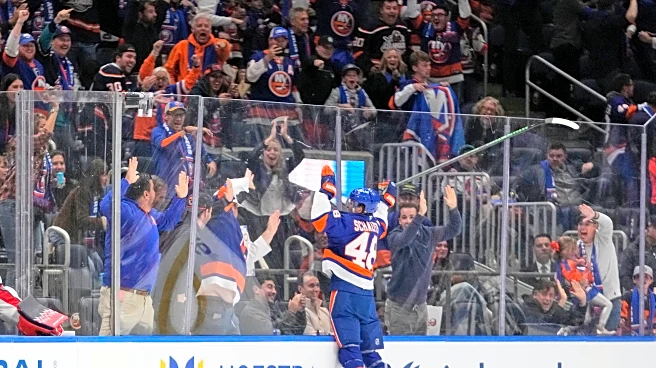What's Happening?
Mathew Barzal, a key player for the New York Islanders, has returned to the ice after recovering from a kneecap surgery that ended his previous season. In the Islanders' season opener against the Pittsburgh Penguins, Barzal demonstrated his ability to drive play and secure an assist, contributing significantly to the team's performance. Despite not playing alongside Bo Horvat, Barzal's line with Kyle Palmieri and Anders Lee was notably effective, generating multiple scoring opportunities. The Islanders' strategy emphasizes quick puck movement to challenge opposing defenses, a tactic that Barzal has adapted to, enhancing his chemistry with teammates.
Why It's Important?
Barzal's ability to integrate well with his teammates is crucial for the Islanders' success this season. Historically, Barzal's unique playing style has made it challenging for linemates to build chemistry with him. However, his recent performance suggests a positive shift, which could lead to improved team dynamics and results. The Islanders invested significantly in acquiring Bo Horvat, expecting him to complement Barzal's play. The development of Barzal's chemistry with his current line could influence the team's strategic decisions and overall performance in the league.
What's Next?
The Islanders will continue to assess Barzal's role and effectiveness in the center position. Coach Patrick Roy has indicated that Barzal's transition back to center might be quicker than anticipated, which could lead to more permanent adjustments in the lineup. The team's upcoming games will be critical in determining whether Barzal's current line configuration remains or if further changes are needed to optimize team performance.
Beyond the Headlines
Barzal's evolving chemistry with his teammates highlights the importance of adaptability and teamwork in professional sports. This development could set a precedent for other players with unique styles, encouraging them to find ways to enhance team synergy. Additionally, the Islanders' strategic focus on quick puck movement may influence other teams to adopt similar tactics, potentially shifting the dynamics of play in the NHL.











